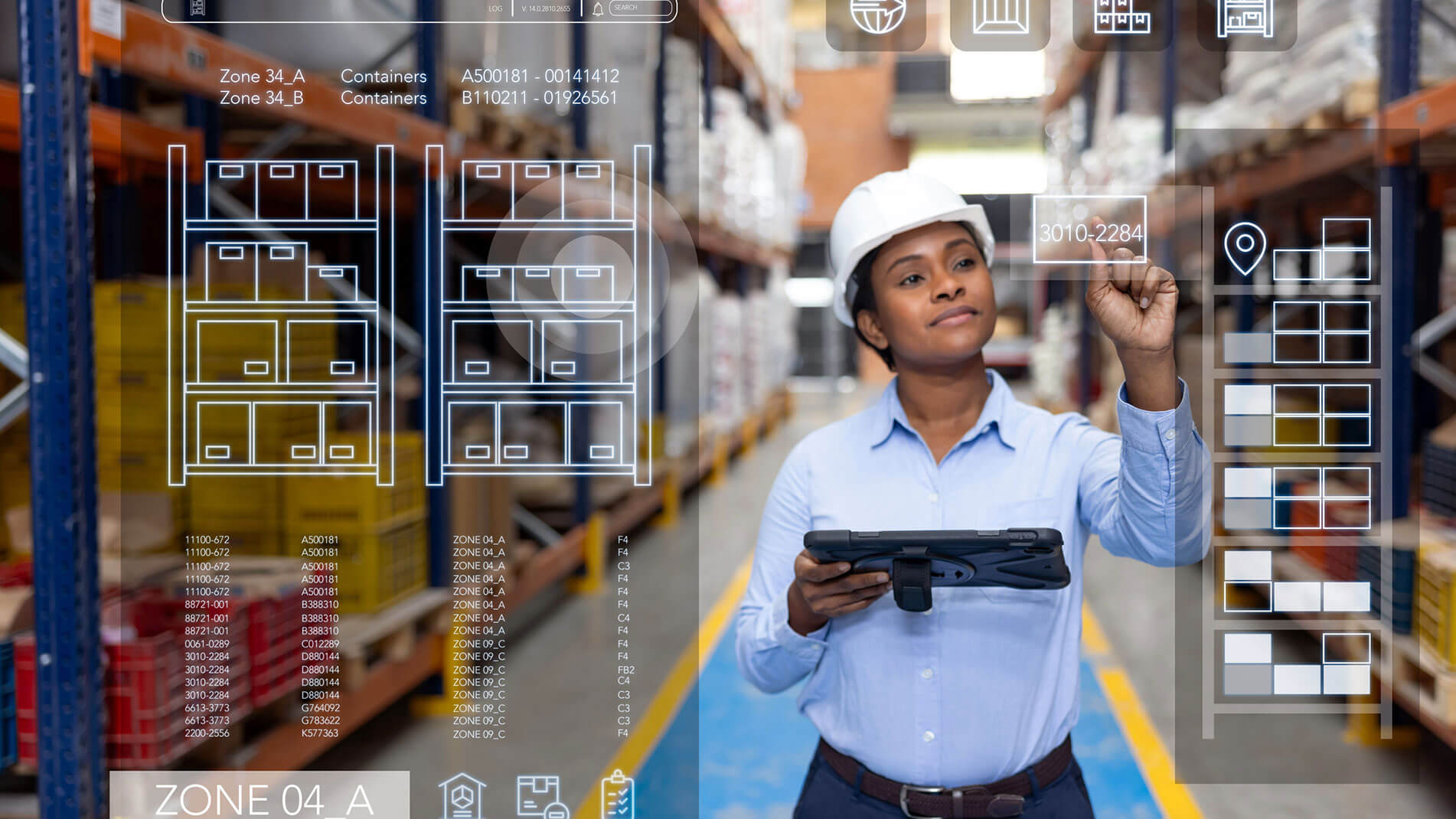How Real-Time Supply Chains Are Transforming the Future of Retail
- August 21, 2025
- Manhattan Staff
- 3 minutes

Key Takeaways
- Integration is Essential: Traditionally, supply chain functions operated in silos, leading to inefficiencies and delays. Unifying these processes can yield greater agility, visibility, and efficiency, which are crucial in today's competitive retail landscape.
- Real-Time Data is a Game Changer: Real-time visibility into inventory, shipments, and operational capacity allows businesses to make quick, informed decisions and respond to disruptions before they impact customers.
- Technology and Cultural Shifts: Today, cloud-native platforms and micro-services-based architectures, have made full integration possible. With supply chain management becoming a strategic priority discussed at the boardroom level, it is now a necessity for businesses to stay competitive.
In today’s retail world, customers don’t care what goes on behind the scenes, they care that the product they want is available where, when and how they want it. This simple truth is why connecting supply chain planning with execution has gone from being a “nice to have” to a competitive necessity.
At Manhattan’s annual user conference, Momentum 2025 in Las Vegas, retail and supply chain leaders discussed how unifying planning and execution is transforming retail operations - delivering agility, visibility, and efficiency to an increasingly complex landscape. Given how competitive brand loyalty and customer retention is, it has become imperative for businesses to move away from silos and look at their operations with a single, unified view.
Back to the Basics - Why Unification Matters Now More Than Ever
Traditionally, supply chain planning and execution operated in silos. Forecasting and demand planning happened in one part of the organization, while warehouse labor scheduling, transportation routing, and delivery coordination happened in another.
In a conversation between Ryan Gifford, Senior Director of Supply Chain Planning Solutions at Manhattan, Miles Tedder, Chief Supply Chain Officer at Pet Supplies Plus, Bart De Muynck, Industry Expert and Independent Advisor and Bob Phibbs, The Retail Doc, they highlighted the transformation in the industry and unification being the need of the hour. Ryan compared the relationship to a dance: “If you’re not moving in a coordinated effort, you end up with disjointed, disconnected results.”
Without integration, delays, mismatches, and wasted resources are inevitable. Disparate systems which are often outdated, struggle to keep up with the pace of modern commerce, especially when customer expectations are shaped by real-time, “buy anywhere, fulfill anywhere” convenience.
Relying on a Single Source of Truth
Miles Tedder, who oversees operations for more than 730 stores of Pet Supplies Plus mentioned that the turning point for his team was realizing that plans change almost immediately after they’re made, and the business needed systems that could adapt just as fast.
They moved their planning and execution to the Manhattan Active® Supply Chain Planning platform, unifying inventory management, fulfillment, and real-time feedback into one environment. This shift eliminated the constant back-and-forth of siloed planning, allowing the company to make quick, informed adjustments when disruptions occur.
The Power of Real-Time Data
In the past, many retailers relied on nightly “batch runs” to update data across systems. This meant the organization was always operating at least a day behind reality. Today, that delay can mean a missed sale or an unhappy customer.
A unified offering removes this delay, providing real-time visibility into inventory, shipments, and operational capacity. For instance, if a shipment is delayed or demand spikes unexpectedly, the system can automatically reroute transportation, reassign labor, or adjust fulfillment plans before customers ever feel the impact.
Avoiding Disruptions
Disruptions happen every day, for multiple reasons - whether it’s a vendor capacity issue, a transportation delay, or sudden shifts in customer demand. Before unification, teams relied on phone calls, spreadsheets, and manual problem-solving. Now, leaders can, and must, visualize the situation instantly, model potential solutions, and act on the most efficient option.
Miles shared how his stores can now track shipments in real time, down to the exact stop a truck is making before it arrives. Soon, they’ll be able to send automated alerts when trucks are minutes away from unloading, ensuring labor is ready and products are stocked without delay!
Another complicating factor in modern retail is SKU proliferation. Retailers add products to meet customer expectations for variety, but this also increases complexity in storage, picking, and replenishment.
Whether reducing or embracing breadth as part of their brand promise, visibility into which products are truly driving value is key. Without it, decisions are made on incomplete or misleading data.
Technology Has Caught Up to the Vision
Even five years ago, full integration between planning and execution at the speed of modern retail was more aspiration than reality. Today, cloud-native platforms and micro-services-based architectures make it possible.
As Ryan explained, forecasts now directly drive warehousing, transportation, and labor planning, and it’s all visible in a single ecosystem. This removes guesswork and enables precision decision-making across the entire supply chain. When asked what outdated processes retailers should eliminate to compete in this environment, two answers came up repeatedly:
- Overreliance on Excel - While spreadsheets are useful for quick analysis, they can’t handle the complexity, speed, and collaboration required for modern supply chains.
- Siloed Planning and Execution - Independent, uncoordinated processes lead to inefficiency and missed opportunities. Collaboration and shared data are non-negotiable.

The Cultural Shift: Putting Supply Chain at the Center
Not long ago, supply chain was a behind-the-scenes function. Now, it’s a boardroom topic. Global macro-economic issues, tariffs, transportation delays, labor shortages, and volatile demand have made resilience a strategic priority.
The new reality? Agility, speed, and simplicity are king. In today’s retail landscape, the ability to move quickly, making fast, informed decisions with streamlined processes sets successful businesses apart. Breaking down silos enables faster decision-making and simplifies operations, reducing complexity, helping teams to focus on what matters most: delivering value to customers without delay.
To conclude, if one thing is clear, it is that winners in 2025 and beyond will be those who can combine speed, simplicity, visibility, and execution across the entire supply chain. Those still relying on disconnected systems will find themselves falling behind, scrambling, and reactive, while integrated retailers will be agile, informed, and ready for whatever comes next, armed with the latest innovations in the world of supply chain commerce.
Ultimately, the supply chain of the future is simplified, unified, real-time, and collaborative. Retailers who break down silos and embrace platforms that merge planning with execution won’t just keep promises to customers, they’ll redefine what’s possible in retail!
To view the entire discussion, please click here.
Related Assets

Supply Chain Planning
Optimize your supply chain with Manhattan's Supply Chain Planning software. Improve forecasting, streamline operations, and enhance visibility for better decision-making.

Pet Supplies Plus Synchronizes Business Functions
Learn how Pet Supplies Plus implemented Manhattan Active® Supply Chain Planning to enhance its forecasting, inventory optimization and operational agility.

Unified Supply Chain
It makes no sense to separate distribution and transportation. To maximize efficiency, Manhattan believes it’s time for them to become one, once again. Manhattan Active® Supply Chain technology allows you to think in terms of inbound and outbound, rather than WMS versus TMS.





